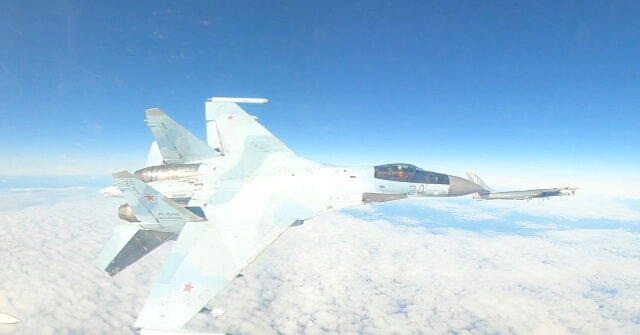


The North American Aerospace Defense Command (NORAD) reported Thursday that Russian military aircraft were detected in the Alaskan Air Defense Identification Zone (ADIZ) on Tuesday and Wednesday. NORAD said such activity “occurs regularly and is not seen as a threat.”
The ADIZ is a zone that extends outward from the sovereign air space of a nation, forming a buffer zone between sovereign and international air space. Planes that enter an ADIZ are identified and tracked to ensure they do not behave in a threatening or provocative manner.
NORAD said the Russian aircraft tracked on Tuesday and Wednesday did not attempt to enter either American or Canadian airspace.
Tensions along the northern frontier have been elevated since an incident in January where an unusually large number of Russian warplanes were spotted in the Arctic, prompting U.S. and Canadian fighters to scramble in response.
Before that, a Russian Su-35 fighter made a dangerous maneuver in close proximity to a NORAD F-16 during a routine intercept in September. NORAD denounced the Russian pilot’s behavior as “unprofessional.”
In July, NORAD intercepted two Russian and two Chinese bombers flying through the Alaska ADIZ. It was the first known instance of Russian and Chinese planes entering the ADIZ together, and the first time Chinese bombers have flown close to Alaska.
